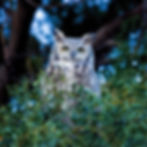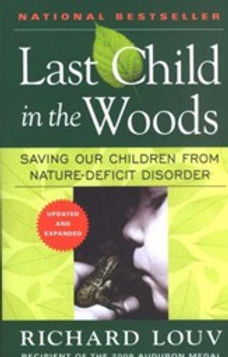Nature Study
“It is infinitely well worth the mother’s while to take some pains every day to secure, in the first place, that her children spend hours daily amongst rural and natural objects; and, in the second place, to infuse into them, or rather, to cherish in them, the love of investigation...
The child who learns his science from a text-book, though he go to Nature for illustrations, and he who gets his information from object lessons, has no chance of forming relations with things as they are, because his kindly obtrusive teacher makes him believe that to know about things is the same as knowing them personally...
Let them once get in touch with nature and a habit is formed which will be a source of delight and habit through life...
Do children keep tadpoles, and silkworms, and caterpillars in these days? Very few have given us the results of their own observations. We have many capital descriptions from books, and that is better than nothing, but the very essence of natural history is that it should, so far as possible, be drawn direct from Nature.
Surely it is not too much to expect that every boy and girl should, before the age of twelve, have formed a little herbarium of the wild flowers in their own neighbourhood, nicely pressed and mounted, and carefully described."
The study of natural history and botany with bird lists and plant lists continues throughout school life, while other branches of science are taken term by term.” -Vol 6 Charlotte Mason
Do you struggle with nature study? Totally lost when it comes time for nature journaling? These resources can help hold your hand as you and your student learn the value of nature together!
The Nature Connection: Clare Walker Leslie shows kids how to experience nature with all five senses, whether they live in the countryside, a major city, or somewhere in between. Guiding children through inspiring activities like sketching wildlife, observing constellations, collecting leaves, keeping a weather journal, and watching bird migrations, The Nature Connection encourages kids to engage with the world outside and promotes a lifelong love of nature.
Keeping a Nature Journal: Hone your powers of observation as you delve into the wonders of the natural world. Filled with beautiful illustrations, this excellent resource offers tips for documenting what you see, pointers on sketching and watercoloring, suggestions for keeping accurate records, ideas for teaching nature journaling to a group, and much more. Ideal for city and country dwellers alike!
Handbook of Nature Study: Witness the wonders of God's creation with naturalist Comstock as your guide! From dandelions, toads, and fireflies, to robins, rocks, and weather, she takes you on a lively trek through the natural world, vividly describing the habits, habitats, and physical structures of common living and nonliving things. Includes study questions and black-and-white photographs.
Pocketful of Pinecones: Karen Andreola, best known for A Charlotte Mason Companion, has written a unique sort of book in the homeschool world. Pocketful of Pinecones is a teacher s guide to nature study cleverly disguised as a heartwarming story, written in the form of a mother s diary.
Woven into the story are:
-
More than130 examples of what to look for on a nature walk,
-
Latin names for the living things observed by the characters,
-
Study questions,
-
Nature poems and verses.
Other features include:
-
A supplement of selected quotations by Miss Charlotte Mason,
-
An annotated list of books with a nature theme, both fiction and non-fiction,
-
Nostalgic pencil drawings.
Last Child In the Woods: Today, average eight-year-olds are better able to identify cartoon characters than native species, such as beetles and oak trees, in their own community. The rate at which doctors prescribe antidepressants to children has doubled in the last five years, and recent studies show that too much computer use spells trouble for the developing mind. Nature-deficit disorder is not a medical condition; it is a description of the human costs of alienation from nature. This alienation damages children and shapes adults, families, and communities. There are solutions, though, and they're right in our own backyards. Last child in the Woods is the first book to bring together cutting-edge research showing that direct exposure to nature is essential for healthy childhood development-physical, emotional, and spiritual. What's more, nature is a potent therapy for depression, obesity, and Add. Environment-based education dramatically improves standardized test scores and grade point averages and develops skills in problem solving, critical thinking, and decision making. Even creativity is stimulated by childhood experiences in nature.
The Kids Nature Book: Shore to desert, country to city,exciting nature activities await discovery from beneath th smallest rock to the vast sky above.





















